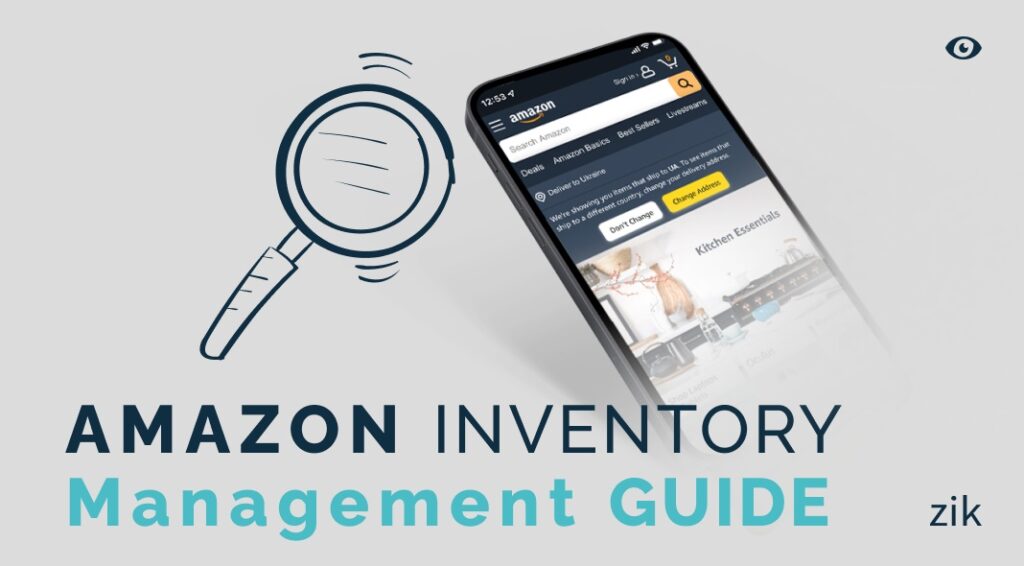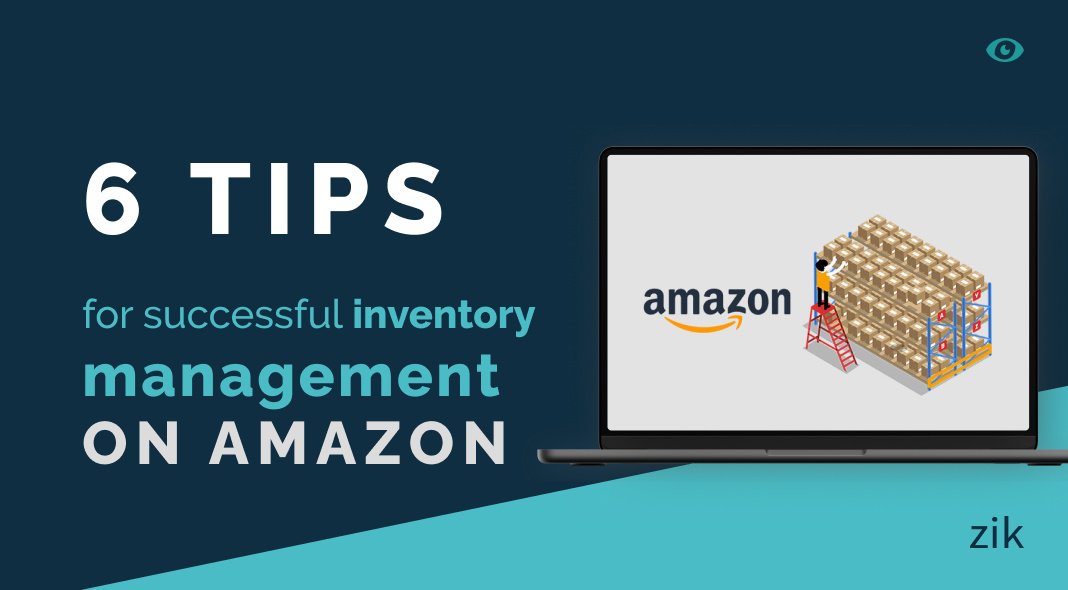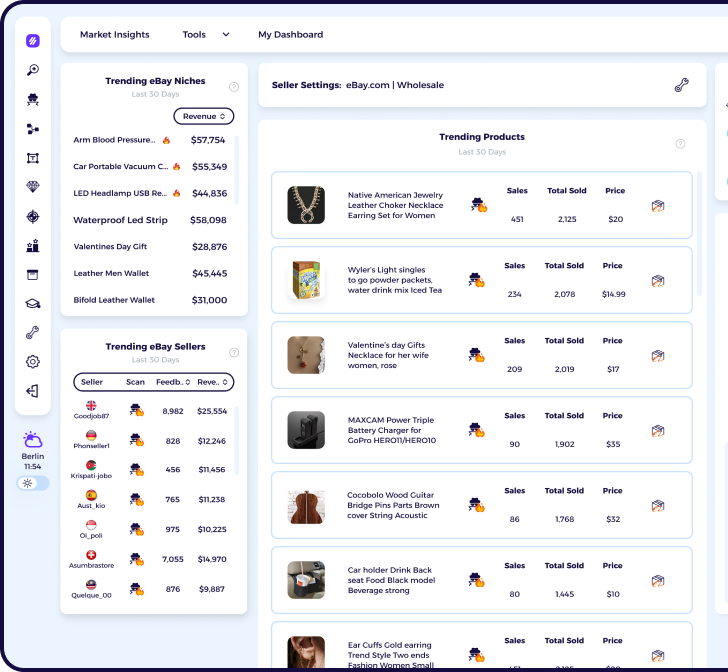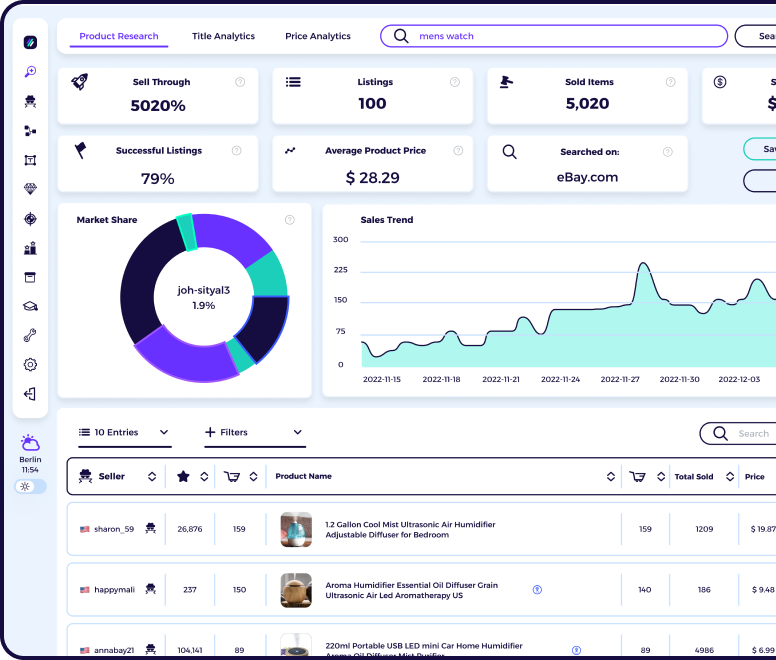Introduction to Amazon Inventory Management
Amazon inventory management is a crucial aspect of running your successful ecommerce businesses. No business should operate without a tool to help manage your inventory if you are selling on Amazon. When you manage your inventory levels, you can effectively handle one of two major hurdles to maintaining profit: running out of stock or over-stocking.
A good Amazon inventory system is all about finding a balance between too much stock or too low supply. It requires a good strategy and business monitoring to ensure the right inventory levels that would align with the demand for your product.
In this guide, you will learn the most effective strategies or a good Amazon inventory management system to ensure that you can keep up with your customer orders. It is also one of the best practices for selling on Amazon if you want to keep your customers satisfied with your customer service.
Why is Amazon Inventory Management Important?
The best way to understand the importance of managing inventory levels on your Amazon shop is to put yourself in the shoes of your customers. You spent countless hours browsing Amazon to find the product you want. And when you finally found that one product, you add it to your cart immediately. Just as you are about to pay for your order, you are notified that the product is currently out of stock.
It’s frustrating as a customer to have spent that amount of time looking for the product, only to realize that it is sold out, or there are no available stocks. It leaves a bad taste in the customer’s mouth. It could also result in your Amazon store being given a poor rating by that customer. Your business operations already suffer two ways because of this scenario: you lose the faith of your customer and you can get a bad rating.
Therefore, it is important to track inventory regularly. Inventory tracking is easy when you only have a few items in your ecommerce businesses. But it gets overwhelming when you stock hundreds to thousands of products in your online shop, or when you are dealing with large sales volumes. That is when you need an Amazon inventory management software or tool.
But first, you must understand the common inventory issues that Amazon sellers face that prompt the need for an Amazon inventory management system.
1. Low stock levels
Running out of stock levels on your inventory for the ecommerce business is a common issue faced by Amazon sellers. When you are experiencing high sales volume, that’s a good thing for your Amazon store. However, it is important that you keep track of your inventory data to ensure that you have enough supplies of the product that your customers want to buy.
If not, your stock levels might not match the demand for the products. If your inventory on Amazon is low and there is a high demand for your products, it could result in lost sales. Inventory tracking is critical for businesses selling high volume of products.
2. Too much stocks
A low inventory for in demand products can be a good problem to have, many Amazon sellers might think. Therefore, some ecommerce business owners might think it is wiser to stock too many products to cope with the demand to ensure that there are enough stock levels for that product.
However, overstocking can also be a poor inventory management issue. Amazon considers any item that is estimated to be over 90 days’ worth of supply excessive. Therefore, it can impact your inventory performance index negatively. Keep in mind that the Amazon fulfillment centers are not your ecommerce business storage facility. Therefore, you have to know your storage limits and consider demand planning so you can be smart about which items to stock and manage your inventory accordingly.
3. Inventory Surcharge
As mentioned above, you should not store over 90 days’ worth of supply for your ecommerce business products on Amazon fulfillment centers. If you do so, you might be facing a penalty in the form of excess surcharges. The cost of the storage fees will be based on the number of stored units.
If you are selling on Amazon, you already have a few fees to take care of. Therefore, the last thing you would want is to slash your profit to pay for the excess storage costs that could be easily avoided. If your inventory data is telling you that you are low on supply for certain products, you must learn how to manage listings on Amazon. It is important to understand the level of customer demand to ensure you have enough inventory.
Best Practices for Amazon Inventory Management
Successful Amazon inventory management can be achieved with proper planning and the use of the right tools. The following are the best practices you must follow to ensure effective inventory management for your Amazon store (and any ecommerce businesses).
Tip 1: Maintain a Good Relationship With Suppliers
A good supplier is the best tool in your arsenal if you want to run a successful ecommerce business, whether on Amazon or not. Suppliers are integral to your business operations because they provide the products you are selling on Amazon.
Maintaining a good relationship with your suppliers puts you ahead of other customers when it comes time to replenish your inventory on Amazon. If not, you could experience frequent stock outs on your ecommerce store. Stock outs refer to the period of time of unavailability of your products.
When your products are unavailable and your inventory is low, this can affect the customer experience in your store. When you keep your customers waiting too long for products to become available in your inventory on Amazon, your customers might turn to other sellers for that product instead.
A good and efficient supplier relationship management is integral to the success on the ecommerce platform. It is a non-technical approach to Amazon inventory management but it is critical to your success.
Tip 2: Manage Inventory for 60 Days
Another important tip for Amazon inventory management is to maintain an inventory that is suitable for 60 days. The 60-day inventory levels is your safest bet on keeping up with sales channels and making sure you have no excessive inventory. Make it a part of your inventory control system so that you don’t run out of stocks and you don’t have too much on your inventory, either.
A good technique to use is to look at the statistics and numbers from your FBA inventory. If you are selling through the Amazon FBA program, or you have your Amazon sellers account, you will be able to see how many products you sell over any given time (such as within the past week or 30 days). You can use those numbers to determine how much inventory you need for the next 30 or 60 days.
Use the data on your Amazon seller account for inventory tracking along with other Amazon inventory management software or system you use.
Tip 3: Avoid High Inventory
You already know what is entailed when you have too much products in your inventory. Therefore, overstocking is a major no-no for businesses selling on Amazon.
But in case you have a high inventory, there are several strategies that you can implement to increase the sales volume and get rid of any excess stocks. One strategy is to offer a promotion. You can offer discount codes to customers or offer great deals they cannot resist. This strategy is a good way to get your inventory moving, especially for slow-moving items. Even if you lose some profit in the process, you could still generate sales while eliminating the storage costs involved when you have excess or aged items in your inventory on Amazon.
You can also boost your advertising efforts on Amazon to get more sales, or you can take advantage of multiple channels for sales generation. Other strategies include offering competitive pricing on your products to ensure you can keep up with your inventory data. Another tip is to offer free shipping labels to your customers.
Tip 4: Lower the Demand for Your Products
On the other hand, if you want to reduce the sales volume of your products, you can employ a reverse approach. You can increase your pricing and stop bidding on keywords on Amazon for advertising. These measures will allow you to keep up with your Amazon inventory management, so that you can control the amount of orders that are coming in.
You can use different approaches depending on the level of demand you get for each product sold on your Amazon store.
Tip 5: Use Amazon Inventory Management Tools
The Amazon Seller Central offers a free Amazon inventory management tool that Amazon sellers can use. This is one of the best Amazon inventory management tools available, especially if you are looking for free tools.
You can go to the Seller Central and you can find many key data that are relevant to your Amazon store. Some of the data that you can view here are the following:
- Active and inactive listings
- Edit product listings
- Inventory reports
- Inventory data
- FBA shipments
- FBA inventory and stock levels
- Update product quantity and pricing
Use the data to manage listings on Amazon. You can add or update your inventory levels accordingly. There is no reason you cannot use the data available here to predict the sales for your products and make sure you have enough inventory in your store.
Tip 6: Use Third-Party Automated Amazon Inventory Management Tools
You can also use third-party inventory management software for your Amazon business. The ecommerce platform allows for seamless integration of inventory management tools so you can use it to manage your Amazon inventory.
The use of third-party inventory software is common with Amazon sellers that have multiple sales channels. Therefore, you have the option to use them not only for Amazon inventory management, but also for other platforms.
Take time to research each of the Amazon inventory management software so you can find the right fit for your budget and needs.
Conclusion
A proper Amazon inventory management system is critical to the success of your ecommerce business. Selling on Amazon is already quite competitive; make sure you stay on top of your Amazon inventory to deliver a good quality customer service. It’s tough to manage your inventory when you are dealing with multiple sales channels, but the advent of an inventory software simplifies your life as an online business owner.
Make sure to use the best practices recommended above and find the best Amazon inventory management software that will overcome any inventory issues.
FAQs on Amazon Inventory Management
How is inventory management done on Amazon?
Amazon sellers can take advantage of the built-in system in Amazon that generates inventory reports on their behalf. It uses machine-learning based inventory management system to provide you with relevant information, such as the number of goods shipped, the cost of those goods, and the remaining levels of your inventory. Make sure to keep track of this inventory data so you know when to order new supplies or when you hold the sales.
What is the easiest way to manage inventory?
There are several strategies you can use to manage your Amazon inventory. One is to fine-tune your forecasting methods for your orders. You can use order data insights to analyze the demand for certain products so you can determine how much inventory is needed for these products.
It is also a good idea to invest in an Amazon inventory management software to automate the process.
How do I edit my Amazon inventory?
You can go to your Amazon seller account and click Inventory. Choose the Manage Inventory option in the drop-down menu. You will be able to sell all of your listings – active and inactive. Go to the specific item you want to update the inventory data for and then click on the Edit button. You can change the quantity or availability of the item.







